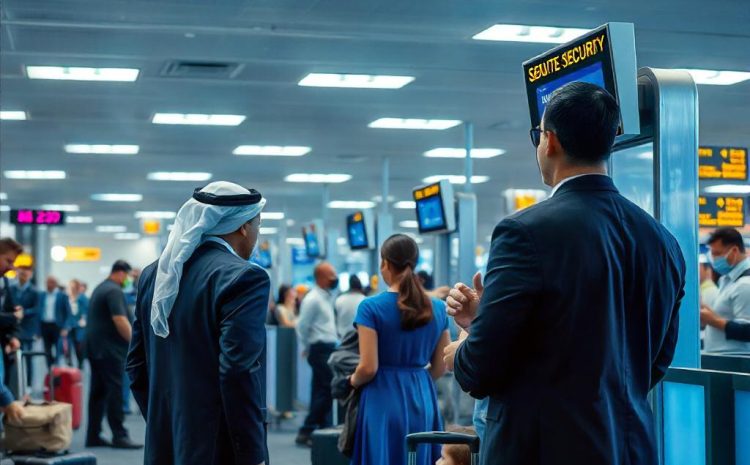
How To Prepare For Security Checks At Airports
Airport security checks can sometimes be a time-consuming and stressful part of traveling, but with proper preparation, you can move through them smoothly and efficiently. Here’s a guide on how to prepare for security checks at airports and minimize wait times and inconvenience.
1. Understand Airport Security Policies
Before arriving at the airport, familiarize yourself with the security policies specific to the country or airport you’re departing from. While most policies are standardized internationally, certain regulations (like liquid allowances) may differ slightly from one country to another.
- Research TSA or Relevant Airport Regulations: The U.S. Transportation Security Administration (TSA) and similar agencies worldwide have websites detailing permitted and prohibited items, carry-on allowances, and specific rules.
- Stay Updated on Current Restrictions: For example, some items or devices may be banned temporarily due to increased security levels or recent events, so it’s good to check before your travel date.
2. Prepare Your Documents in Advance
Having your documents ready and accessible is one of the best ways to ensure a smoother security process.
- Keep Your Passport and Boarding Pass Handy: Place your ID and boarding pass in a secure yet easily accessible place, like a front pocket or a travel wallet.
- Use Mobile Boarding Passes: Many airlines now allow passengers to use digital boarding passes on their phones, which reduces the need for paper tickets and makes accessing your pass quicker.
3. Pack Smart for Security Checks
Your packing strategy can greatly influence how quickly you can get through security checks. Organize your bags to meet standard security requirements.
- Liquids and Gels Rule (3-1-1 Rule): Most countries, including the U.S., limit carry-on liquids to 3.4 ounces (100 ml) per container, placed in a single, clear quart-sized bag. Ensure all liquids, gels, and aerosols are stored accordingly to avoid delays.
- Easy Access to Electronics: Laptops, tablets, and other large electronics usually need to be removed from your bag at the checkpoint. Pack them in an easily accessible location so you can quickly take them out when needed.
- Organize Sharp Objects: If you must carry small sharp objects like tweezers or nail clippers, make sure they are permitted and stored safely. Most knives and larger sharp items are prohibited in carry-on bags and should be packed in checked luggage if allowed.
- Use Clear Bags for Small Items: Placing smaller items like keys, chargers, and loose change in a clear plastic bag can prevent them from being misplaced and speeds up the process.
4. Dress for Security Efficiency
Your clothing choices can impact how quickly you move through security checks, especially since certain items may require additional screening.
- Wear Slip-On Shoes: Security checks often require passengers to remove their shoes, so wear slip-on shoes to make this process faster.
- Avoid Metal Accessories: Jewelry, belts, or clothing with metal details can set off metal detectors. Avoid excessive metal and wear minimal accessories to reduce the risk of needing additional screening.
- Empty Pockets Before Arriving at Security: Place all items, such as wallets, phones, and coins, in your carry-on before reaching the checkpoint. This way, you can avoid delays from having to remove these items at the scanner.
5. Consider TSA PreCheck, Global Entry, or Similar Programs
If you travel frequently, consider enrolling in TSA PreCheck, Global Entry, or similar programs that expedite security screenings.
- TSA PreCheck: For U.S. domestic travelers, TSA PreCheck provides expedited screening, allowing you to keep on shoes, belts, and light jackets, as well as leave laptops and liquids in your bag. It’s a great time-saver for regular travelers.
- Global Entry: Ideal for international travelers returning to the U.S., Global Entry includes TSA PreCheck benefits and provides expedited customs clearance.
- Other Programs Abroad: Similar programs exist in other regions, such as NEXUS for Canada-U.S. travel or the Registered Traveller Service in the U.K. These can save you valuable time.
6. Prepare for Potential Additional Screening
Even if you’re fully prepared, random screenings or additional checks may still occur. Knowing how to handle them can make the experience less stressful.
- Stay Calm and Follow Instructions: If selected for additional screening, calmly follow all instructions from security officers. These procedures are routine, and patience will help you get through them faster.
- Be Aware of Prohibited Items in Checked Luggage: Some items (like large lithium batteries or certain types of food) may be allowed in carry-on luggage but prohibited in checked luggage. Double-check regulations if you’re unsure.
7. Use Security-Friendly Gear
Investing in travel accessories specifically designed for airport security can help streamline the process.
- Travel-Approved Clear Toiletry Bags: These bags make it easy to present liquids to security staff and ensure they comply with airport regulations.
- RFID-Blocking Wallets: Security checks may involve proximity to other travelers, so an RFID-blocking wallet can protect sensitive information stored in credit cards and IDs.
8. Arrive Early and Be Patient
Affiliate Insurance Itinerary Plan – Your All-Inclusive Travel Plan:
Preparation can only do so much if you’re running late and under pressure. Arriving at the airport early ensures that you have plenty of time to handle security and avoid added stress.
- Factor in Time for Security Delays: Airport security lines vary in length depending on time of day, day of the week, and season. Plan to arrive two hours before a domestic flight and three hours before an international flight, though longer waits are sometimes advisable during peak travel periods.
- Stay Calm and Be Respectful: Remember that airport staff are there to ensure safety. Patience and courtesy go a long way in making the process smoother for everyone.

